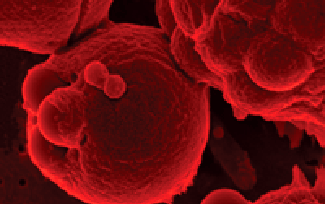Discovery in the evolution of the immune system absorbing cells

The group, led by doctor J. Oriol Sunyer, from the Faculty of Veterinary Medicine of the University of Pennsylvania, and formed by researchers from Philadelphia, St. Louis and Idaho (USA) and doctor Lluís Tort, from the UAB, have been able to show that B lymphocytes in fish and also in amphibians are able to carry out effective phagoytosis both in vivo experiments and in vitro. This work has been published in Nature Immunology, the most prestigious international journal in the field of immunology.
According to doctor Sunyer, "this discovery is important to understand not only how the immune system of fish and amphibians works, but also to understand the origin and the composition of the immune system in humans and mammals". The work concludes that macrophages and lymphocytes have an evolutionary relationship by which both types of cells have evolved from a common ancestral cell with functional properties common to both cells. So, while B lymphocytes in inferior vertebrates (fish and amphibians) conserve the ability to phagotyze, as well as producing immunoglobulin, in higher vertebrates B lymphocytes have lost the ability to phagotyze, specializing in, almost exclusively, functions which are part of the adaptive immune response.
It is very probable that as fish and amphibians have a less elaborate and more restricted adaptative immune response, the conservation of the ability to phagotyze on the part of B-lymphocytes has been an evolutionary advantage to fight against pathogens. We should not overlook the fact that fish have been very successful from an evolutionary point of view, as almost 50% of vertebrate species belong to this group, and besides, they are in constant contact with a multitude of microorganisms, which are present in water. Doctor Sunyer considers that "from a practical point of view, this discovery will be used, in the near future, to manufacture new design vaccines for fish, with the aim of stimulating phagocytosis of antigens by B lymphocytes and, therefore, increasing the effectiveness of the vaccine".
Comparative biology is still an important source of scientific knowledge. The same researchers showed, some years ago, that lower vertebrates showed a more versatile and potent innate immune response system, while mammals have developed more efficiency and specialization in the adaptive mechanism of their immunoglobuline.
Due to its impact and novelty this work has been chosen to appear on the cover of the October issue of Nature Immunology.

Figure 1. We can see a trout lymphocyte in the process of phagotyzing particles (the cell in upper right) or with particles which have already been phagotyzed (cell lower right, shown with arrows).

Figure 2. We can see on the right a macrophage (large cell) after phagotyzing particles, and in the lower left a B-lymphocyte (small cell) also phagotyzing particles.


